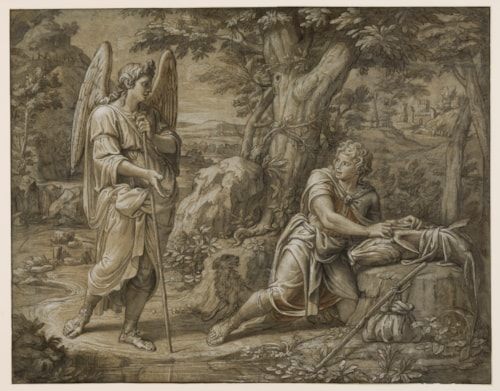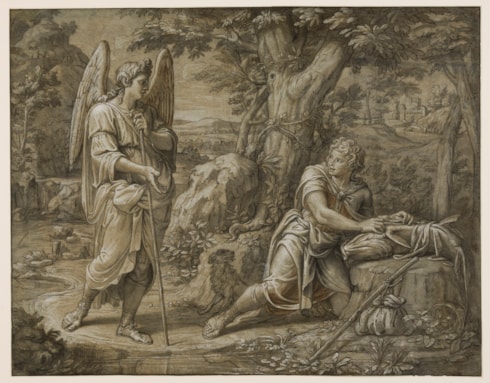
Louis CHERON
Paris 1660 - London 1725
Biography
Born into a Protestant Huguenot family of artists in France, Louis Chéron studied with his father, the enamel painter, miniaturist and engraver Henri Chéron, before entering the Académie Royale de Peinture et de Sculpture. A student of Charles Le Brun, Chéron won the Prix de Rome twice, in 1676 and 1678, and spent several years at the newly-established Académie de France in Rome. In Rome, he was particularly inspired by the work of Raphael; so much so that he often referred to himself, in later years, as a pupil of Raphael, according to the 18th century collector, connoisseur and biographer Antoine-Joseph Dezallier d’Argenville. In 1680, Chéron won a first prize at the Accademia di San Luca in Rome with a finished drawing of The Judgement of Solomon. After spending some time in Venice, where he painted a work for the church of San Pantaleone, Chéron returned to France in 1686. There he enjoyed some immediate success, painting two large votive ‘May’ pictures for the cathedral of Notre-Dame in Paris in 1687 and 1690. He also received a commission for paintings to decorate the salon of the townhouse of his sister, the well-known poet and painter Elisabeth-Sophie Chéron Le Hay, and provided etched illustrations for her Les Psaumes nouvellement mis en vers, published in 1693.
By the early 1690s, however, Chéron had settled in London, escaping the persecution of Protestants that followed the revocation of the Edict of Nantes by Louis XIV in 1685. He may have been encouraged to emigrate to England by one of his patrons, Ralph Montagu, 1st Earl and later 1st Duke of Montagu, who had been the British ambassador to France and was a leading patron of Huguenot artists. By 1693 Chéron was listed as a worshipper in the French Huguenot congregation in the Savoy Chapel in London, and in 1710 he became a British citizen, living and working in Covent Garden until the end of his life. Some of Chéron’s most significant English commissions were the result of Montagu patronage, notably for ceiling paintings at Boughton House in Northamptonshire and other works at Montagu House in London and Ditton Park in Buckinghamshire. He also produced decorative ceiling paintings for Burghley House in Lincolnshire and Chatsworth in Derbyshire.
In 1709 Chéron was one of five artists asked to submit designs for the decoration of the dome of St. Paul’s Cathedral; a commission eventually won by James Thornhill. He produced a significant number of cabinet pictures, and also worked extensively as a book illustrator, producing around 130 drawings for illustrations, mainly after 1710. In 1718 Chéron and John Vanderbank, who had both been teachers at Sir Godfrey Kneller’s Great Queen Street Academy, left to establish their own art school, the St. Martin’s Lane Academy. One of the first schools in Europe to employ female as well as male models, the Academy closed in 1724 when Vanderbank was forced to leave the country to avoid his debts. Chéron died the following year in London.


